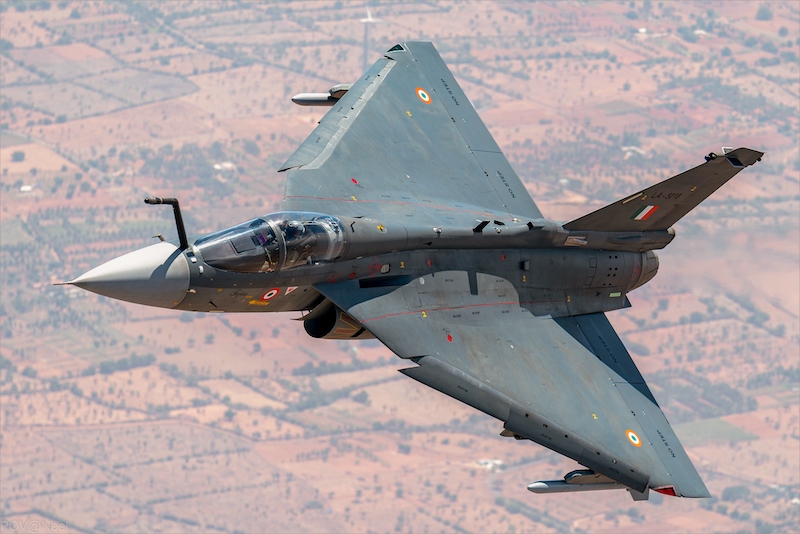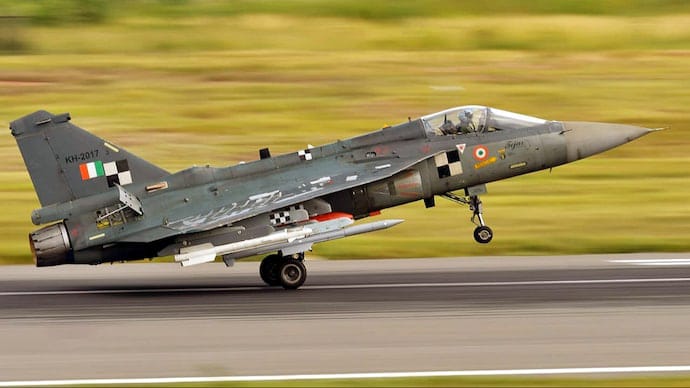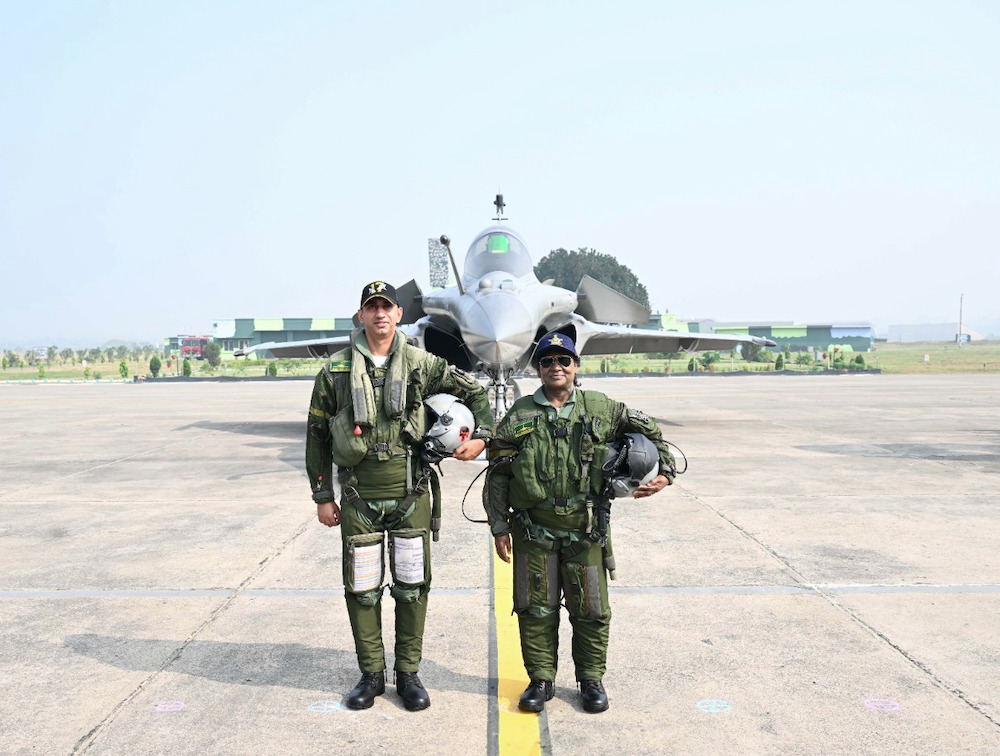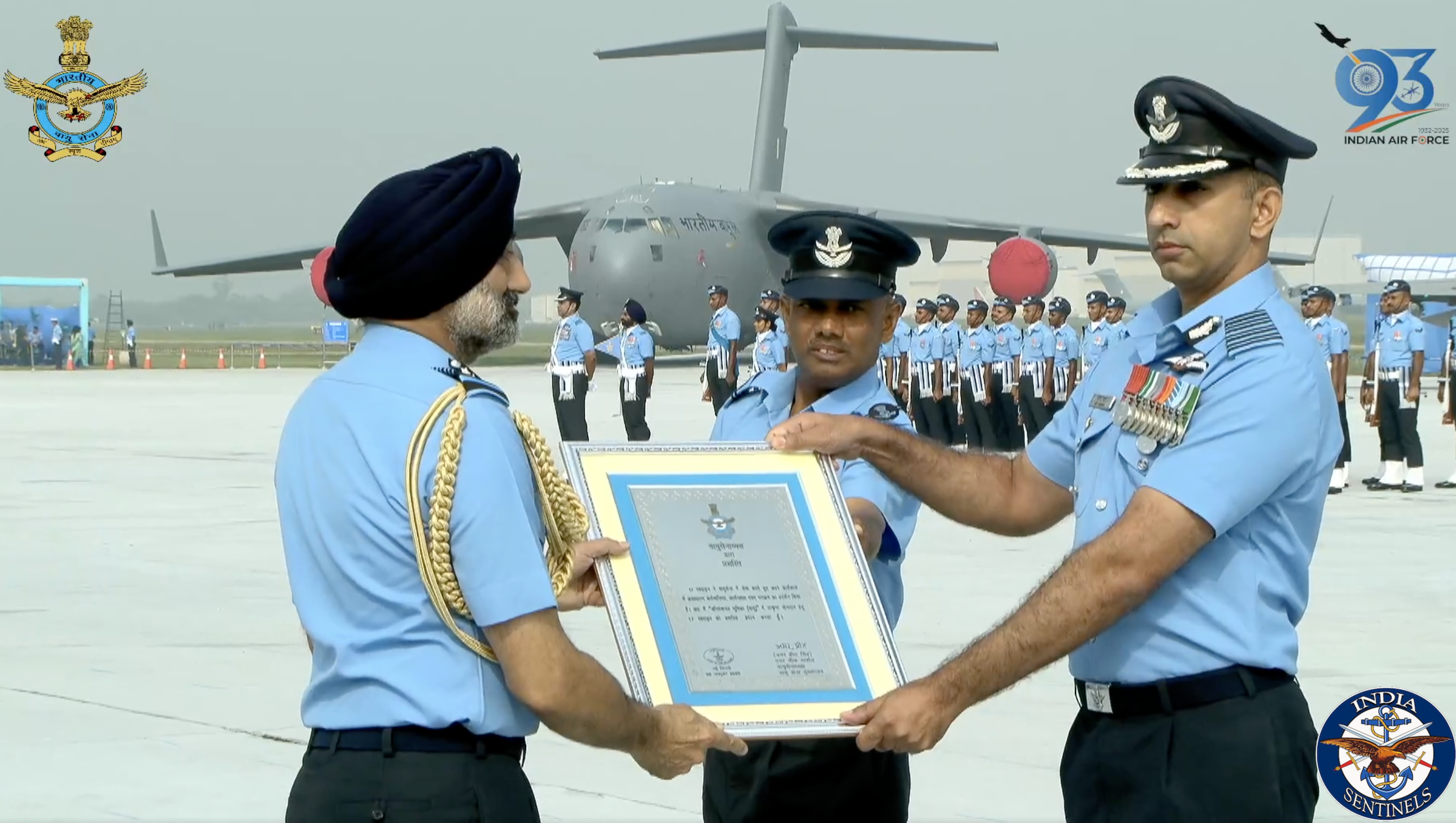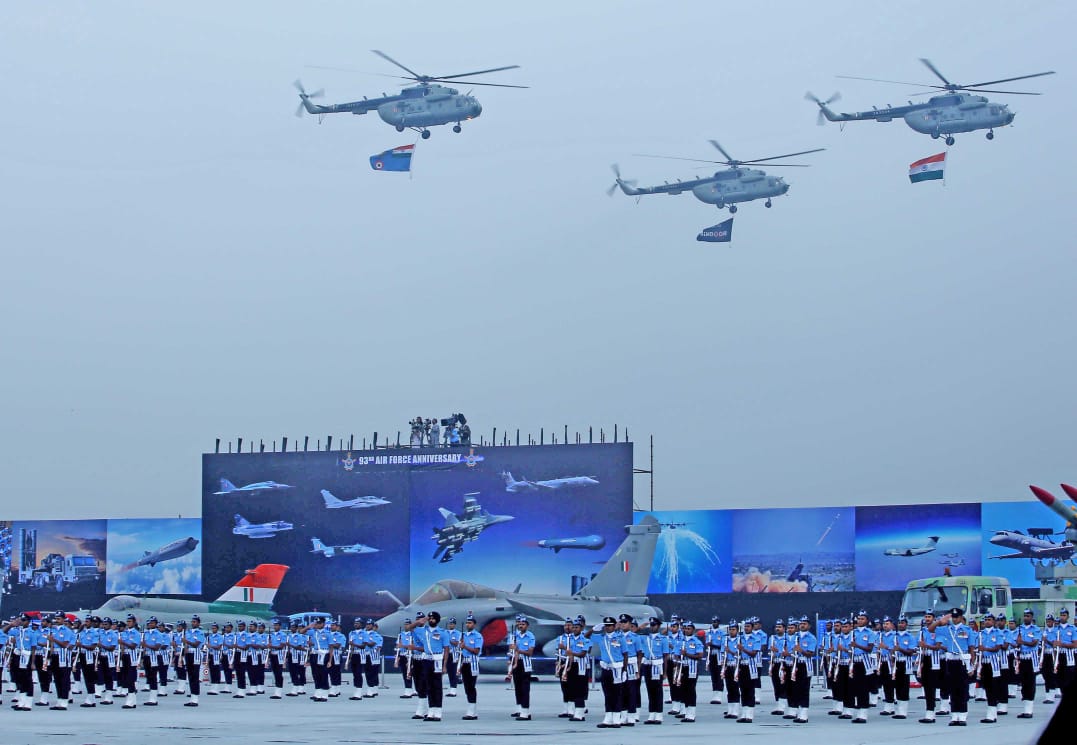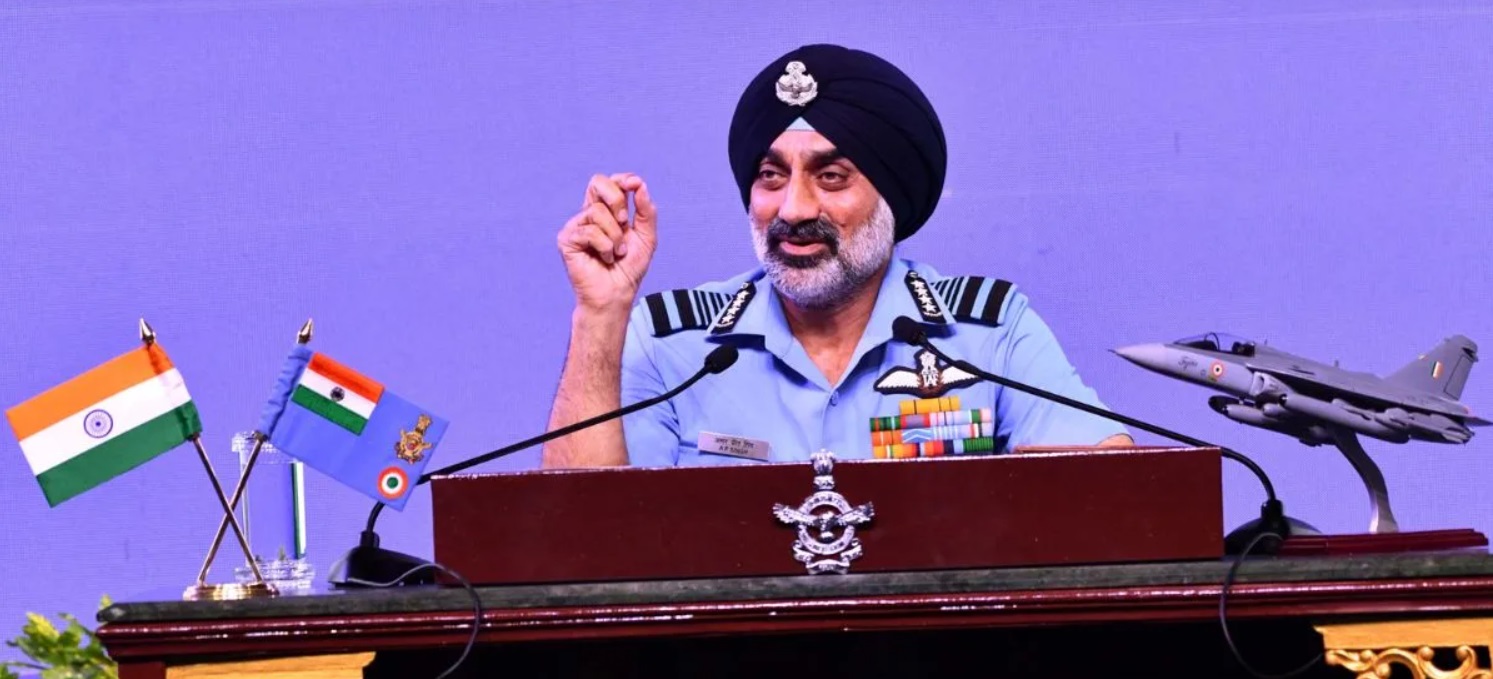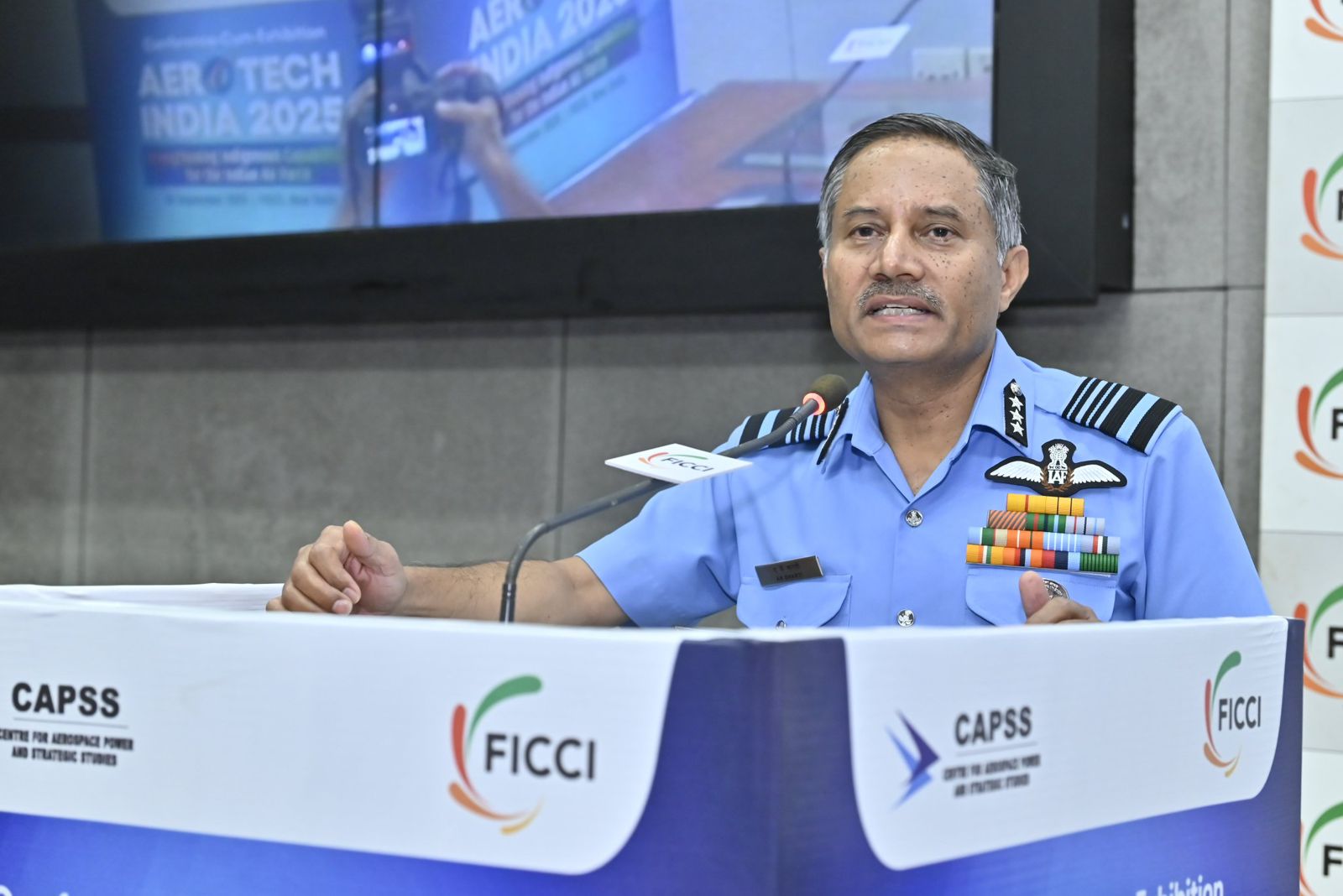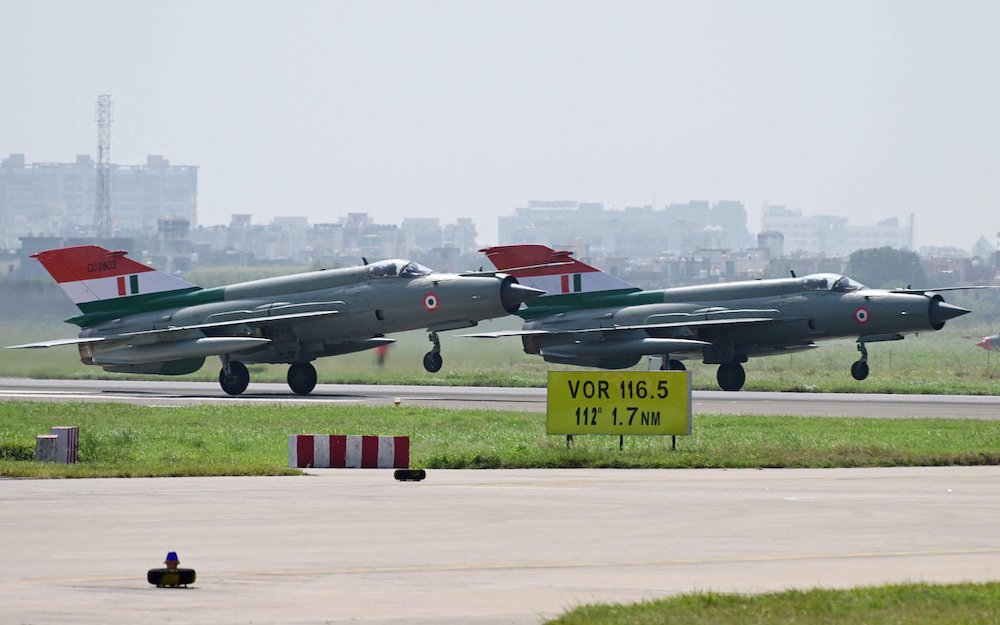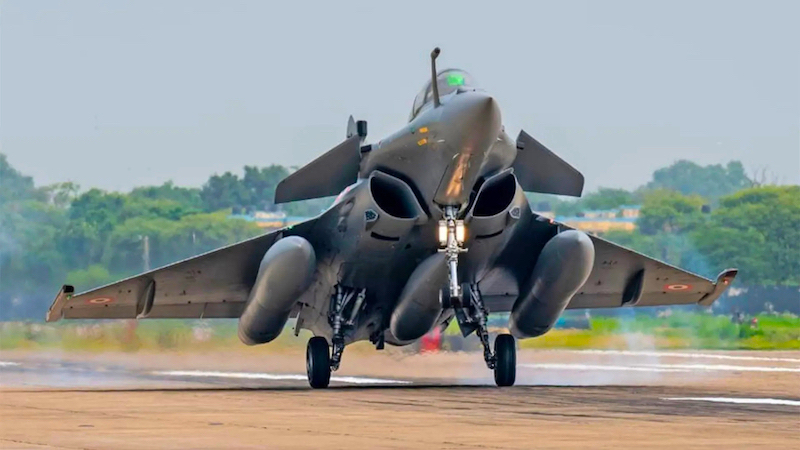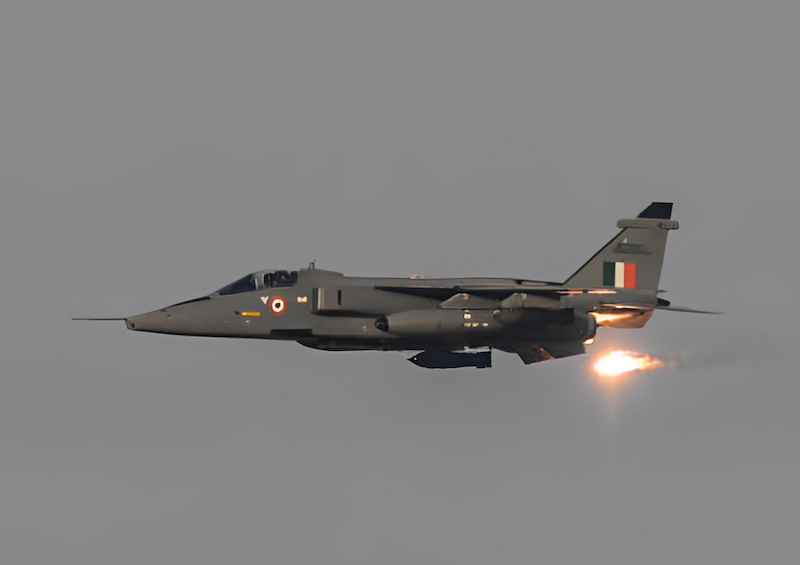 An Indian Air Force Jaguar during a live-fire training operation. (File photo)
An Indian Air Force Jaguar during a live-fire training operation. (File photo)
New Delhi: A twin-seater Jaguar IB trainer aircraft of the Indian Air Force crashed in an agricultural field near Bhanoda village in Rajasthan’s Churu district on Wednesday, killing both pilots on board. The tragedy, which occurred at approximately 1.25pm during a routine training mission, has reignited concerns about the safety of India’s aging Jaguar fleet.
The aircraft had taken off from Suratgarh Air Force Station when it encountered difficulties and went down in a remote area away from populated zones. Eyewitnesses reported hearing a loud explosion followed by thick black smoke rising from the crash site. Local residents described how the aircraft appeared to be steered away from the village, potentially saving civilian lives on the ground.
“An IAF Jaguar trainer aircraft met with an accident during a routine training mission and crashed near Churu in Rajasthan today. Both pilots sustained fatal injuries in the accident. No damage to any civil property has been reported,” the Indian Air Force said in an official statement, adding that it “deeply regrets the loss of lives and stands firmly with the bereaved families”.
The two pilots who perished were Squadron Leader Lokendra Singh Sindhu, 31, and Flight Lieutenant Rishi Raj Singh, 23. Both were serving with the prestigious No. 5 Squadron “Tuskers”. A court of inquiry has been constituted to investigate the cause of the accident.
Two young pilots dead
Sqn Ldr Sindhu, from Kheri-Sadh village in Haryana’s Rohtak district, was commissioned into the Indian Air Force in 2016 after completing training at the National Defence Academy. His father, Joginder Singh, had served as a superintendent at Maharshi Dayanand University, while his mother worked as a schoolteacher. The tragedy struck particularly hard as Sindhu had recently become a father – his wife Surbhi, a doctor, had given birth to their son on June 10, 2025. He had rejoined duty on June 30 after taking leave for his son’s birth.
Flt Lt Singh, a native of Pali in Rajasthan, represented the courage of India’s next-generation fighter pilots. After completing school education, he joined the National Defence Academy in Pune, where he completed a rigorous three-and-a-half-year course before being commissioned. His father, Jaswant Singh, runs a hotel business, while his mother, Bhanwar Kanwar, is a homemaker. Despite his young age, Singh had already earned recognition for his sharp reflexes and unwavering commitment to duty.
The chief minister of Rajasthan, Bhajan Lal Sharma, expressed condolences, stating: “Received the tragic news of an Indian Air Force aircraft crashing in the Ratangarh area of Churu district. May God grant the departed souls a place at His divine feet and give the grieving families the strength to bear this immense sorrow.”
Third Jaguar crash this year
Wednesday’s crash marked the third Jaguar aircraft accident in 2025, which highlighted a disturbing trend that has raised serious concerns about the aging fleet’s airworthiness. On March 7, a Jaguar IS fighter aircraft crashed near Panchkula, Haryana, shortly after taking off from Ambala Air Force Station. The pilot managed to eject safely after steering away from populated areas.
On April 2, another Jaguar IB crashed near Jamnagar Air Force Station in Gujarat during a night training mission. Flight Lieutenant Siddharth Yadav was killed after ensuring his co-pilot ejected safely, demonstrating remarkable heroism by steering the aircraft away from populated areas despite the critical malfunction.
These three crashes in 2025 have resulted in three pilot fatalities and raised urgent questions about the continued operational viability of the Jaguar fleet. The frequency of these incidents – occurring within just five months – represents an unusually high accident rate even for aging aircraft.
According to parliamentary data, the IAF recorded 34 aircraft accidents between 2017 and 2022, with the majority attributed to human error and technical defects. The Jaguar fleet specifically has suffered significantly, with at least 13 IAF Jaguars crashing over the past decade. Aviation safety experts note that by 2015, the fleet had suffered 50 crashes, resulting in the loss of 65 aircraft out of 140 originally inducted – a staggering attrition rate of nearly 46%.
Aging fleet poses growing risk
The SEPECAT Jaguar, originally developed as a joint British-French project in the 1960s, was first inducted into the IAF in 1979. While the aircraft served admirably during the Kargil War in 1999 and the Balakot airstrikes in 2019, its age is now becoming a critical liability. India is now the only country in the world still operating Jaguar aircraft in active service, with Britain retiring its fleet in April 2007 and France in July 2005.
Experts say the primary technical issue plaguing the Jaguar fleet is its underpowered Rolls-Royce-Turbomeca Adour Mk811 engines, which provide only 8,430 pounds of thrust per engine. This proves inadequate for India’s “hot and high” operating conditions, especially from forward airbases near the Himalayas. The engines struggle during critical mission phases such as take-off, climb, and low-level manoeuvring under full payload conditions.
The availability of spare parts has become a serious logistical bottleneck, with the IAF and Hindustan Aeronautics Limited forced to rely on local refurbishments and cannibalized parts. In recent years, India has acquired decommissioned Jaguar airframes and spares from the UK, France, and Oman primarily to harvest parts to keep the IAF fleet airworthy.
The IAF faces a complex modernization challenge, currently operating only 31 active squadrons against a sanctioned strength of 42 squadrons. This shortage has forced the service to extend the service life of aging aircraft like the Jaguar despite associated risks. Delays in the HAL Tejas Mk1A program, slow progress in additional Rafale acquisitions, and the protracted Multi-Role Fighter Aircraft procurement process have all contributed to the delayed replacement of the Jaguar fleet.
A proposed engine upgrade program using Honeywell F125-IN turbofans was evaluated for nearly a decade before being cancelled in 2019 due to cost concerns – the estimated cost was Rs 190 crore per aircraft plus an additional Rs 20 crore for modifications.
Despite recent accidents, the IAF has made significant strides in improving overall flight safety, with the accident rate declining from 0.93 per 10,000 flying hours in 2000-2005 to 0.20 in 2020-2024. However, experts argue that while newer aircraft have seen improved safety records, older platforms like the Jaguar remain vulnerable.
The loss of Sqn Ldr Sindhu and Flt Lt Singh serves as a stark reminder that the human cost of delayed modernization is measured not just in statistics but in the lives of India’s finest service members. Their sacrifice underscores the urgent need for comprehensive fleet modernization and the balance between operational necessity and pilot safety that the IAF must carefully navigate.


